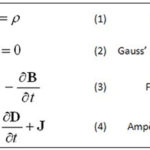The overlap among best design practices, regulatory mandates, and project requirements may result in conflict and unachievable project results.
Engineers are used to designing with respect to constraints and tradeoffs: after all, that’s what design is mainly about. If there were no such tradeoffs, getting a project completed and signed off would be far, far easier than it is.
However, I am starting to wonder and even worry that the layering and overlap among the trio of design imperatives for best practices (A), required performance objectives (B), and regulatory mandates (C) are making the development of a viable design increasingly difficult and perhaps soon impossible. The problem I see is that each of these requirements may be sensible, logical, and even necessary But if you think of them as a basic Venn diagram, the resulting area of likely success may be shrinking to a null set as one or more of A, B, or C get larger and are in conflict with each other (Figure 1).

Some of the areas which place demands on the design include:
- Basic performance to an industry standard such as Wi-Fi connectivity. Obviously, this may be among the design’s primary requirements, and if you don’t meet this, you don’t have a viable product. The product must be compliant to the appropriate extent, or it’s not even in the game.
- The layout issues associated with the design. Even a “simple” design has significant issues, which was made clear as I finished the final part of a ten-part series, “Evaluation of EMC Emissions and Ground Techniques on 1- and 2-layer PCBs with Power Converters”, published by In Compliance (this final part has links to all nine previous parts). There are so many best-practice and often conflicting guidelines points to adhere to, and so many tradeoffs where doing something necessary in the layout also has a negative effect. Some of these imperatives are defined by the laws of physics and Maxwell’s equations, while others are due to well-intentioned regulatory-compliance standards.
- Thermal-design constraints also define how much power a component, board, or system can dissipate before it overwhelms whatever cooing scheme is in place.
- Safety standards of various types, which become increasingly stringent with increasing levels of voltage and current. These usually “kick in” at around 50 V depending on the application and, of course, get more complex from there. There are insulation strength and integrity issues, placement, double insulation, creepage and clearance (even versus environmental setting, which adds complications), and many more.
- Numerous standards are defining minimum efficiency and power factor levels for power supplies and their systems, which adjust with power level and operational mode (active, standby, quiescent), and as a function of maximum power level.
- There are also the many EMI/EMC requirements as a function of power level and frequency, plus surge- and transient-resistance requirements. For example, I was looking at the datasheet for the Mean Well DRS-240, an AC-DC power supply, and battery-charge/discharge manager for residential- and commercial-building safety systems (fire alarms, emergency lighting, and similar). In addition to the basic performance requirements mandated by the various worldwide building codes (such as UL 2524, NPFA 1221, BS EN/EN54-4, and GP 17945), the list of safety and EMC standards it had to meet was impressive (Figure 2).

- In addition, each application area (medical, for example) has a list of standards unique to its needs and situation, with some mandated, some recommended, and some suggested. There’s even a standard that defines what sounds, and for what duration (beeps, alarms, chirps) medical instrumentation from home thermometers to in-hospital patient monitors should make and under what circumstances. That may seem overbearing, but it really is not when you think about it. The intention is to reduce confusion when multiple instruments from different vendors are used, especially if simultaneously in emergency rooms, operating suites, intensive care, and recovery rooms.
My concern is that while each of the stated requirements (and others) makes very good sense individually and is justified by the specifics, their aggregation makes a successful, compliant, approved design almost impossible, if not totally so. There’s the well-known effect of layering one demand on top of another and another: eventually, the entire structure either cannot be sustained, or it collapses.
Perhaps a more fitting analogy comes from Jonathan Swift’s 1726 classic work “Gulliver’s Travels”, which presents four mythical and allegorical voyages. In one, Gulliver visits the Lilliputians, a race of six-inch tall human-like creatures above whom Gulliver towers and has little of which to be afraid – or so he thinks. However, while he is sleeping, they tie him down with thousands of cotton threads to the point where he is immobilized despite the size differential (Figure 3).

Is this the trajectory of modern design? Obviously, I don’t know, but it worries me. On one side, today’s technology can do so much, and so much is being asked and even demanded of it via additional and usually well-intentioned mandates, standards, and regulatory requirements, with more being continuously added.
At the same, however, the history of engineering creativity and capability has been one of overcoming technical and other obstacles to advance end-product creations. That stays true, of course, until a tipping or inflection point is reached and it is no longer possible, followed by a reassessment of fundamental requirements as designers insist “it can’t be done” and really mean it.
Related EE World Content
What are the top five Li-ion battery safety standards?
Security standards and MCUs
What are 1-phase and 3-phase AC power connectors & standards?
Why and how are medical connectors and standards different?
What’s the status of EV charging connector standards?
Medical PCB assembly: Know these regulations and standards
Power supply regulations, requirements, and standards
Battery safety standards and testing







Leave a Reply
You must be logged in to post a comment.